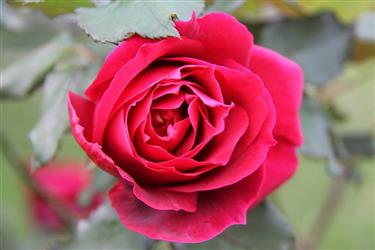
Fragrance families have changed a lot over the last 100 years. Originally, they included floral - both single and bouquet, woody, chypre, amber, fougere and leather.
The original Chypre fragrance was created by Francois Coty in 1917. It took the world by storm. Based on an accord of bergamot, oakmoss, patchouli and labdanum, this fragrance style remains popular today, 100 years later.
Perfumery continues to evolve with new styles and fragrances emerging every year. Michael Edwards, “the perfume expert’s expert” invented the Fragrance Wheel to help categorise and organise fragrances, by sorting them into four main groups including Floral, Oriental, Woody and Fresh, which are further subdivided into families including green, fruity and mossy wood or chypre. He was kind enough to sign a copy of his book “Fragrances of the World” for me.
The floral fragrance group remains a favourite for many and includes fresh floral, soft floral and floral oriental.

The ancient Persians had an intense love of roses which often featured in their perfumes and poetry: From Gulistan by Sadi-- - "but long I kept the roses company; thus near its perfect fragrance to me came".
An excursion to the rose fields was part of the perfumery course I attended at ANSFO. While there, I lent a hand with the extraction of rose petals. I like to think there was a little bit of me in Chanel No. 5 that year.
My perfumes span the range of fragrance families and are created using the finest essential oils. When creating a new perfume, I find the best way to test it is on my own skin - I can usually try about 6 before I run out of space!
You can "dip 'n' sniff" or "try and buy" a whole range of gorgeous perfumes at this year's Australasian Artisan Botanical Perfume Expo in Sydney, November 18th. Don't miss out - get your tickets now. Or find out more about this exciting event on the Facebook event page here.



Comments